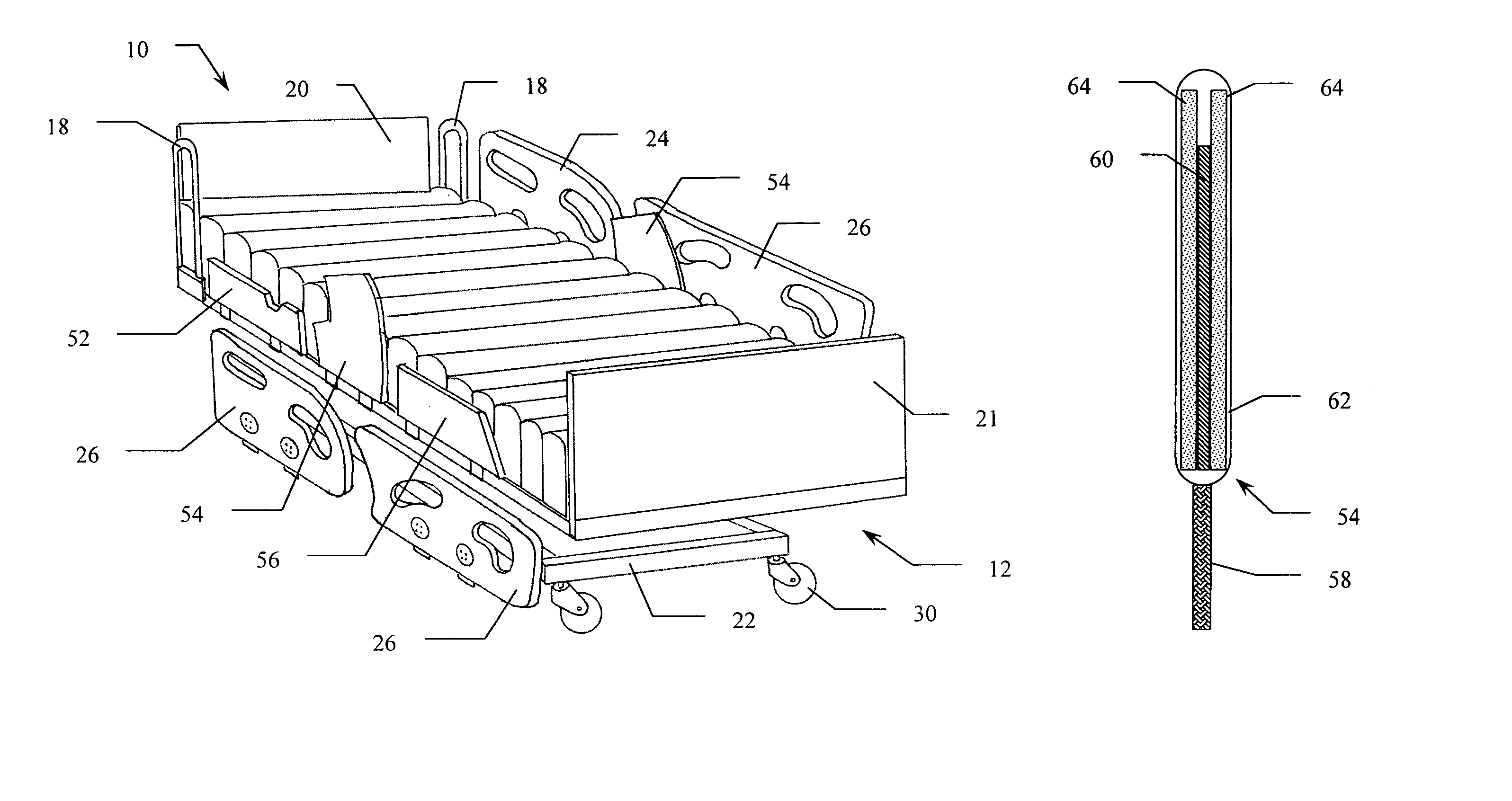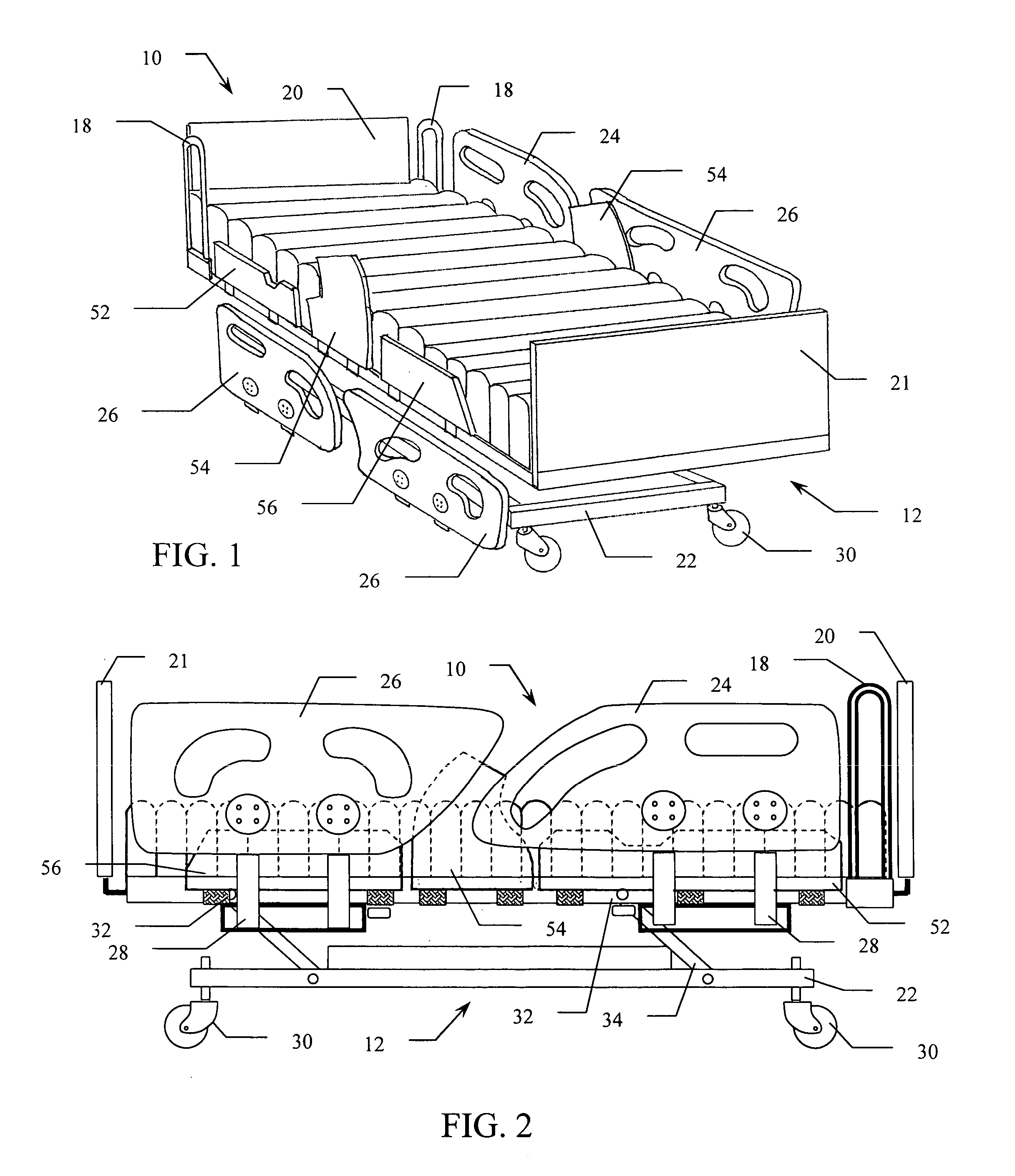Side rail pad system for patient support apparatus
a technology for supporting devices and side rails, which is applied in the field of side rail systems, can solve the problems of inability to maintain a fixed association between cushions and patient support platforms, inability to accommodate the articulation of bed frames, and inability to maintain the stability of bed frames, so as to facilitate the movement of patients, improve the structural shape and design, and facilitate the effect of preventing movemen
- Summary
- Abstract
- Description
- Claims
- Application Information
AI Technical Summary
Benefits of technology
Problems solved by technology
Method used
Image
Examples
Embodiment Construction
[0022]Reference is made first to FIG. 1 for a general description of a patient support system implementing the side rail pad system of the present invention. In FIG. 1, bed 10 is shown in a perspective view with one set of side rails elevated and a second set of side rails lowered as may typically be the case in a hospital setting. Bed 10 is comprised of frame 12 positioned on, and supported by base 22. Mattress 16 is positioned on top of frame 12 and may be any of a number of different mattress structures including air inflation mattress systems. Base 22 is made mobile by the provision of a plurality of casters 30 positioned thereon.
[0023]Enclosing the surface area of mattress 16, are head board 20 and foot board 21 at the upper and lower extremes of the mattress surface area. On the sides of mattress 16 are head space bars 18, upper side rails 24, and lower side rails 26. The upper and lower side rails 24 and 26 positioned on either side of mattress 16 are mirror images of each ot...
PUM
 Login to View More
Login to View More Abstract
Description
Claims
Application Information
 Login to View More
Login to View More - R&D
- Intellectual Property
- Life Sciences
- Materials
- Tech Scout
- Unparalleled Data Quality
- Higher Quality Content
- 60% Fewer Hallucinations
Browse by: Latest US Patents, China's latest patents, Technical Efficacy Thesaurus, Application Domain, Technology Topic, Popular Technical Reports.
© 2025 PatSnap. All rights reserved.Legal|Privacy policy|Modern Slavery Act Transparency Statement|Sitemap|About US| Contact US: help@patsnap.com



